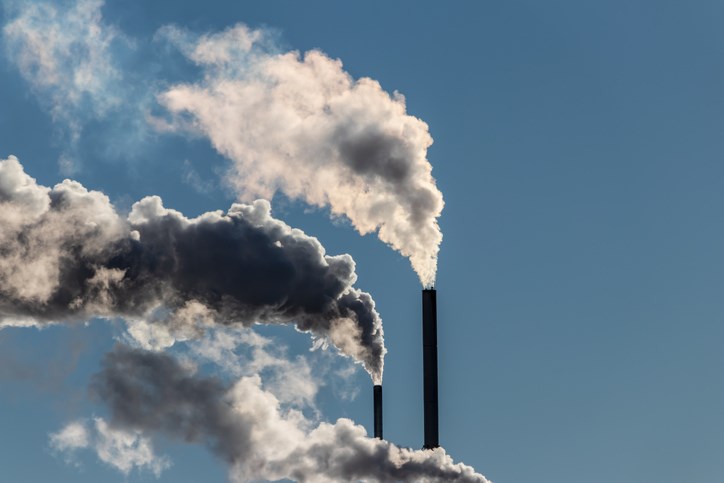The Nobel Prizes have been awarded annually for the past 120 years. Originally, they were intended to mark the most significant paper or research from the previous year but they quickly turned into an award for outstanding research, period.
A lot of outstanding research is produced each year, so too much would be missed if only one year was considered. An unofficial and unacknowledged queue for scientific discoveries exists. Work climbs in the queue if its significance lasts or it radically alters the thinking in a discipline.
The Nobel Prize in Physics this year recognized the work of Syukuro Manabe, Klaus Hasselman, and Giorgio Parisi for “groundbreaking contributions to our understanding of complex systems,” with half the prize awarded to Manabe and Hassleman “for the physical modelling of the Earth’s climate, quantifying variability and reliably predicting global warming”. The other half of the prize was awarded to Parisi “for the discovery of the interplay of disorder and fluctuations in physical systems from atomic to planetary scales.”
Scientists have developed an understanding the atmosphere over the past two hundred years. Work on the composition of the atmosphere and the eventual discovery of the gaseous components took place in the late 1700s.
But it was Fourier’s research in the 1820s which established the Earth’s energy balance and the central role “shortwave” or visible light from the Sun plays. Fourier was the first to suggest the atmosphere acts like a greenhouse restricting the flow of heat from the planet’s surface back into outer space and recognizing the role played by the atmosphere.
Further, the separation between the frequency of incoming and outgoing light plays a critical role. Light coming from the Sun is at a maximum in the green portion of the visible spectrum while light emitted by Earth is squarely in infrared region.
The role carbon dioxide played in heating the atmosphere was first measured by Eunice Foote but it was John Tyndall who, in 1861, published extensively on the absorption and emission of infrared radiation by a wide variety of gases, including water vapour and carbon dioxide.
This work provided the experimental foundation for the beginning of our understanding of the “Greenhouse Effect”. It was a key to the subsequent work carried out by Svante Arrhenius in 1896. (Arrhenius won the 1903 Nobel Prize in Chemistry for his work on the Theory of Electrolytic Dissociation.)
Essentially, Arrhenius’ calculation showed the combustion of fossil fuels would lead to a build of carbon dioxide in the atmosphere and alter the mean surface temperature. Specifically, he developed a simplistic model of the atmosphere which helped to explain the mean surface temperature of the planet involving the rate of heat transfer through the atmosphere.
In 1938, Guy Stewart Callendar revived Arrhenius’ ideas and was able to demonstrate that carbon dioxide levels in the atmosphere were, in fact, increasing. This was subsequently measured by infrared spectroscopy at Mauna Loa resulting in The Keeling Curve, named after Charles Keeling who began the monitoring program in 1958.
But the difficulty with all of the early work was simply the mathematical framework and computational power to properly both understand and model the atmosphere was not available prior to the 1960s. And our understanding of non-linear differential equations was far from complete.
Early models could explain large scale atmospheric phenomena such as why the mean surface temperature is around 15 C while the “bare Earth” temperature would be closer to -18 C but not the finer details.
This is where the work of this year’s Nobel Laureates kicks in. In the 1950s, the Institute for Advanced Study at Princeton began a project led by Jule Charney and John von Neumann to develop a numerical model for weather forecasting. This evolved in parallel with theoretical and experimental work on atmospheric and oceanic processes under the general categorization of geophysical fluid dynamics.
In 1959, John Smagorinsky, head of Princeton’s Geophysical Fluid Dynamics Laboratory, recruited Syukuro Manabe. Manabe’s research treated the entire atmosphere as a single one-dimensional column with a given profile of relative humidity and greenhouse gas concentrations. By 1975, Manabe and R.T. Wetherald had substantially advanced their initial treatment by solving the full equations for heat, mass, momentum, and radiation resulting in the first Global Climate Model or GCM.
Hasselman advanced the GCM through developing a deeper appreciation for the nature of the fluctuations on the sea-surface and the role the oceans play in modifying climate behaviour. He derived a generalizable stochastic description in which the noise is associated with weather while the underlying trends provide for climate.
As to what this now means, the Nobel Committee says: “What we are saying is that the modelling climate is solidly based in physical theory and solid physics. Global warming is resting on solid science. That is the message.”



